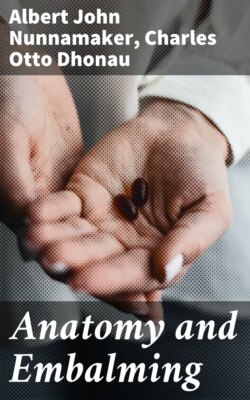Читать книгу Anatomy and Embalming - Charles Otto Dhonau - Страница 42
На сайте Литреса книга снята с продажи.
Muscles.
Оглавление—Myology is that branch of anatomy which treats of the muscles. The muscles are formed of bundles of reddish fibres, endowed with the property of contractility. In the body we find two kinds of muscular tissue, called voluntary and involuntary muscle. The voluntary type is characterized by the striped appearance which it displays when seen under the microscope, and for this reason it is called striped or striated muscle. It is so named “voluntary” because it is capable of being put into action and controlled by the will. The involuntary muscles do not present any striped appearance, and consequently are called unstriped or non-striated, and are not under the control of the will. An example of voluntary muscle would be any muscle of the bony framework as for example, the biceps or triceps.
Fig. 7—View of muscle fibers.
An example of involuntary muscle would be those of the intestines and stomach, the muscles of the bladder and uterus and the walls of the arteries and veins, etc.
When viewed under the microscope, the muscle is seen to be composed of many fibrils. The sheath covering each fibril is called the sarcolemma, and contains within its boundaries the muscle plasma, or protoplasm, and a nucleus. Many of the fibrils when grouped together constitute the entire muscle.
The muscles get their blood supply from the nutrient artery, which ramifies the tissues, the smallest capillaries coming in contact with each muscle cell.
